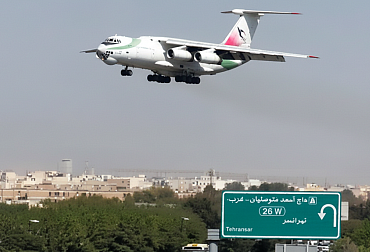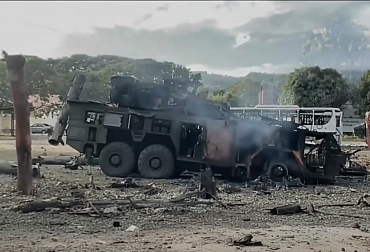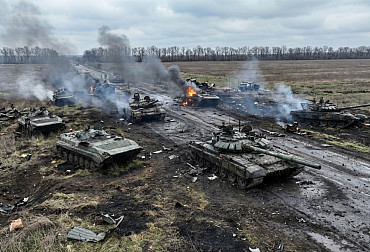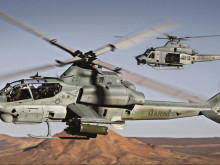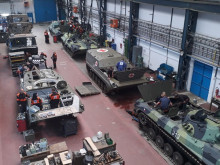Lockheed Martin presented F-35 Lightning II supersonic fighter aircraft in Prague
Representatives of Lockheed Martin presented the F-35 Lightning II supersonic fighter aircraft, the purchase of which is being negotiated by Czech Defence Minister Jana Černochová (ODS) on behalf of the Czech Government. The deadline for the negotiations is set for October 2023, and 24 aircraft are in play, i.e. two squadrons. During the briefing, many details were given regarding the objectives of the F-35 programme, the role of the aircraft in building the defence capability of the European airspace. The issue of cost, reliability and sustainability of the aircraft, as well as the capabilities that the F-35 brings to the armed forces, was not overlooked. In the words of Gregory Day, who is responsible for international business development at Lockheed Martin, the F-35 offers the best value for the lowest price.
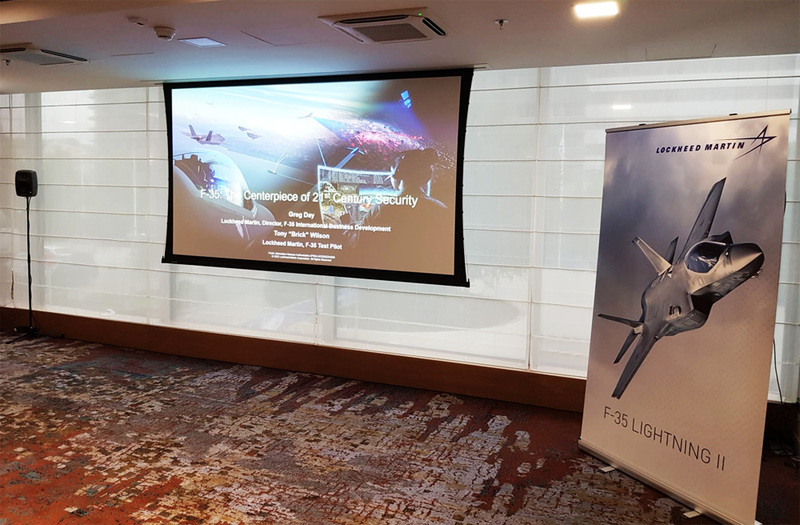 Picture: Lockheed Martin representatives unveil the F-35 Lightning II supersonic combat aircraft at a press briefing in Prague yesterday | Jan Zilvar / CZ DEFENCE
Picture: Lockheed Martin representatives unveil the F-35 Lightning II supersonic combat aircraft at a press briefing in Prague yesterday | Jan Zilvar / CZ DEFENCE
At the start of his presentation, Gregory Day said: "The theme today is the F-35 as a means of providing security in the 21st century. It's more than an aircraft, it's more than an air system. It is a platform and a capability that enables others to perform better in ensuring our security."
The first chapter then turned to the issue of delivery, the provision of air power and the status of the F-35 program. The production program is on schedule. Over 840 F-35s have been delivered to date, and 140-153 are being produced each year, with a goal of 156 Lightnings per year. The aircraft have reached full operational capability in many countries and have logged a total of 550,000 hours in the air. In addition to the United States, F-35s are flying in the United Kingdom, Israel, Norway, Italy and the Netherlands. They have also reached initial operational capability in Japan, Australia and South Korea. Denmark, Canada, Belgium, Poland, Singapore, Finland, and Switzerland have also already signed contracts for the F-35 (undergoing a very rigorous review of the terms of the challenging acquisition), and deliveries to Germany, the Czech Republic, and Greece are under negotiation (which in particular will be a thorn in the side of neighboring Turkey, which has been dropped from the program due to its purchase of Russian S-400 air defense systems). Thus, by 2030, more than 550 F-35s are expected to be flying in Europe, about a tenth of them in US colours.
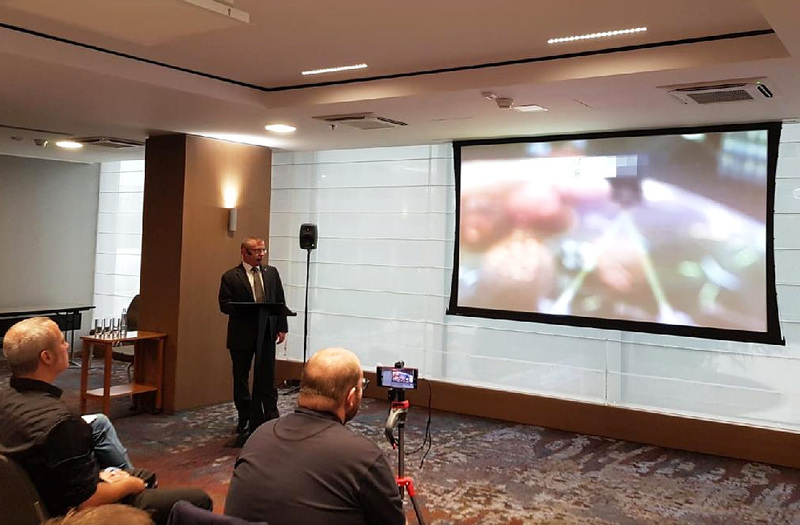 Picture: Lockheed Martin representatives unveil the F-35 Lightning II supersonic combat aircraft at a press briefing in Prague yesterday | Jan Zilvar / CZ DEFENCE
Picture: Lockheed Martin representatives unveil the F-35 Lightning II supersonic combat aircraft at a press briefing in Prague yesterday | Jan Zilvar / CZ DEFENCE
Already today, the Lightnings are involved in the protection of European airspace, whether from bases in the UK, the Netherlands, Germany, Norway or Italy, or during Air Policing missions in the Baltic States, Poland, Romania, Bulgaria, in close proximity to the ongoing conflict in Ukraine, or over Iceland. "This platform acts as a strategic deterrent to potential aggressors," said Gregory Day. "If a country has the F-35, it is clear that it has a high capability to defend itself and ensure victory at all cost."
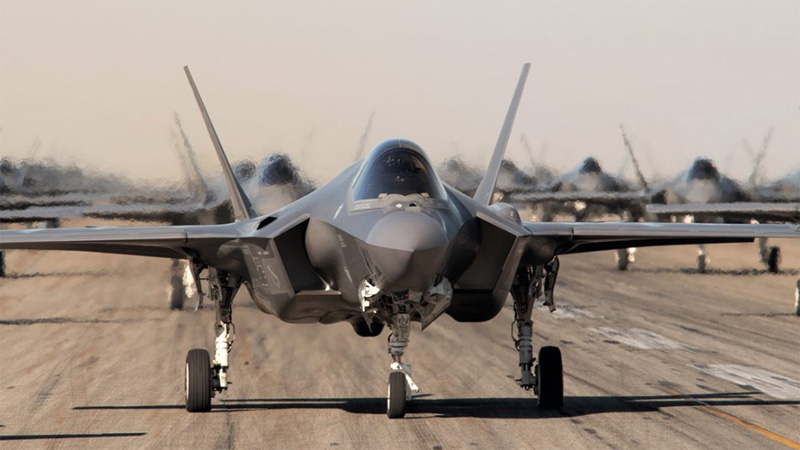 Picture: F-35 Lightning II supersonic combat aircraft | Lockheed Martin
Picture: F-35 Lightning II supersonic combat aircraft | Lockheed Martin
He then used the word "cost" to introduce a significant portion of the presentation, in which he addressed the issue of the reliability and sustainability of the F-35 in terms of the cost involved. If the reliability requirement under the program is an average of six flight hours between failures of certain systems, the current average (converted to all three versions, i.e., A, B, and C) is 9.6 flight hours. The evolution of sustainability costs is similarly favourable. With a requirement of 9 man-hours per flight hour, the current value (again averaged over all three versions) is approximately half of this, i.e. 4.7 man-hours. The ground-based version A, which the Czech MoD is negotiating to acquire, then achieves the best results in both respects: an average of 11.8 hours between failures, and only 3.8 man-hours of maintenance per flight hour. In terms of maintenance costs, then, there has been a 50% reduction since 2015 (Gregory Day pointed out that in those areas directly affected by Lockheed Martin). With further production and efficiency pressures, Day said this positive trend can be expected to continue.
"We did an evaluation of the fighter aircraft bids that we received, and based on what was included in the bid, we did an evaluation and the F-35 won; it was the clear winner," Major General Pasi Jokinen, commander of the Finnish Air Force, said this February. "The F-35 is the most advanced combat aircraft in the world, and many of our European partners have also opted for this aircraft. It strengthens our ability to work with them to secure NATO airspace and defend the Alliance," German Luftwaffe Lieutenant General and Inspector General Ingo Gerharts said in March.
"When I can't fly, the opportunity to talk about the qualities of the F-35 is second to none," F-35 chief test pilot Tony "Brick" Wilson said of his part of the presentation, "The F-35 is the most effective, most engaged, most survivable fighter aircraft on the planet today."
He then pointed to the F-35's stealth capability, which Lockheed Martin has been developing since the 1950s with the SR-71 reconnaissance aircraft project through the F-117 and F-22 to the F-35, as a significant capability of the F-35 as a 5th generation aircraft. Unlike the 4th generation aircraft, most of the F-35's sensors are so-called passive, collecting data in a full 360° around the aircraft. A critical capability is sensor fusion, which provides the pilot with information collected and evaluated by all of the aircraft's sensors. "When I flew Gen 4 aircraft, not only were they the pilot, but also the sensor operators. I had to set the radar in the desired direction, the instruments under the wings, collect information from several screens. The sensor fusion capability does that on its own instead of the pilot," Wilson described the system.
The aircraft is designed to be deployed in conjunction with other systems on the battlefield, with which it is networked via the Link 16 protocol to share critical real-time information about the situation, targets, missions, and the position of its own and identified adversary forces. This makes the F-35 not only an effective fighter, but also, and perhaps most importantly, a data hub that multiplies the power of other deployed assets.
Lockheed Martin emphasizes the aircraft's survivability in all circumstances. One of the systems that helps to achieve this is the so-called AutoGCAS, an automatic ground collision avoidance system. Another feature of the latest Block 4 aircraft is called TR3 (Technology Refresh 3). The F-35's capabilities rely primarily on software solutions, which are updated every six months under TR3, bringing new capabilities and options.
The F-35 was thus introduced as the most advanced fighter aircraft currently in production. It is already an important element of deterrence against potential adversaries. It is undergoing continuous development, made possible by the Block 4 upgrade and TR3 upgrade. It is in operational deployment and has demonstrated its capabilities in real-life situations. Its spread across the Allied forces will then enable further reductions, particularly in operational costs and affordability.
- Gregory Day is responsible for business development for Lockheed Martin Aeronautics' F-35 division in Canada and Northern and Central Europe. Previously, he was responsible for leading business development in the North Asia region. He also served as the F-35 Business Development Manager in Belgium, where he was responsible for activities directed towards the Belgian F-35 program, which included customer engagement initiatives, interacting with key industry partners in the region and leading the strategy for communication plans. He led the F-35 business development activities in the United Kingdom.
- Tony "Brick" Wilson is chief of fighter flight operations for Lockheed Martin Corporation. In this role, Wilson is responsible for leading Lockheed Martin's worldwide fighter flight operations, managing aircraft test events during developmental flight tests and production acceptance flights, managing all aspects of flight safety and flight testing, as well as overseeing the selection, training and assignment of production and test pilots. Prior to joining Lockheed Martin in 2016, then-Cmdr. Wilson served 25 years in the U.S. Navy.












